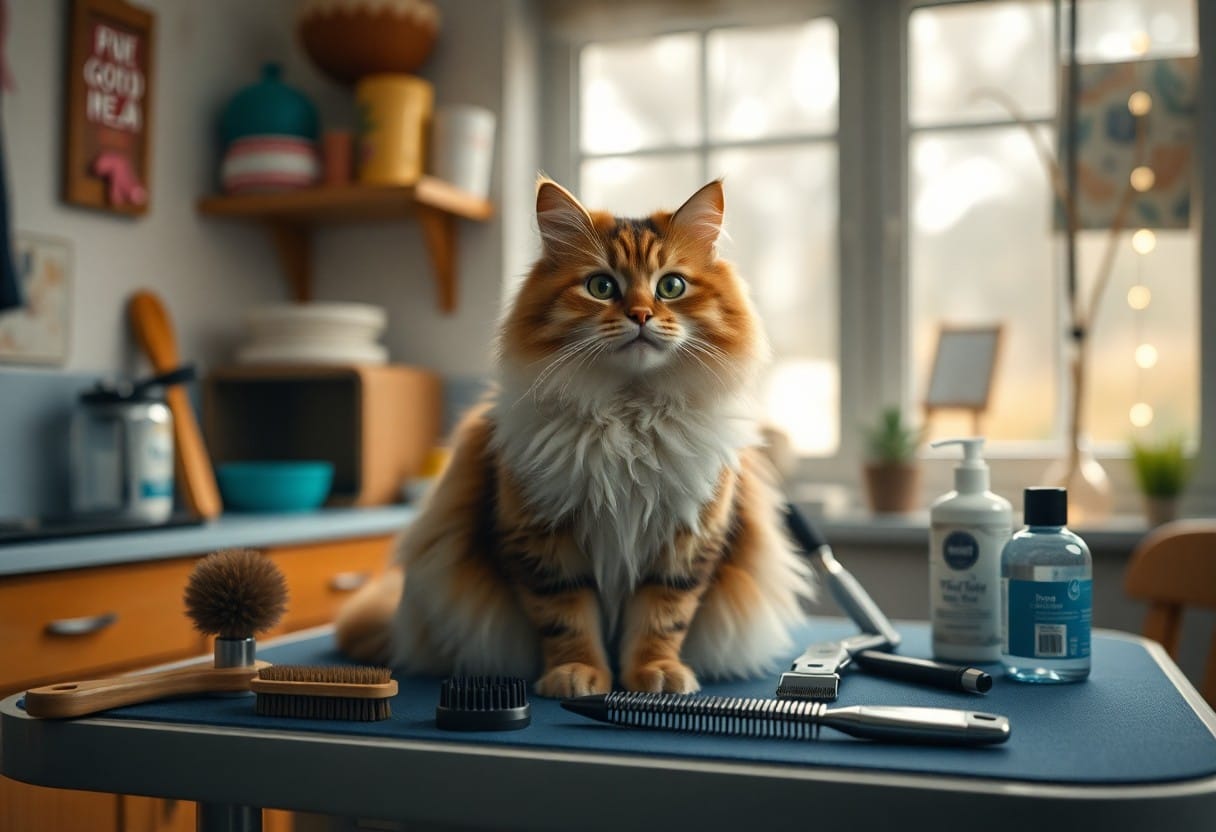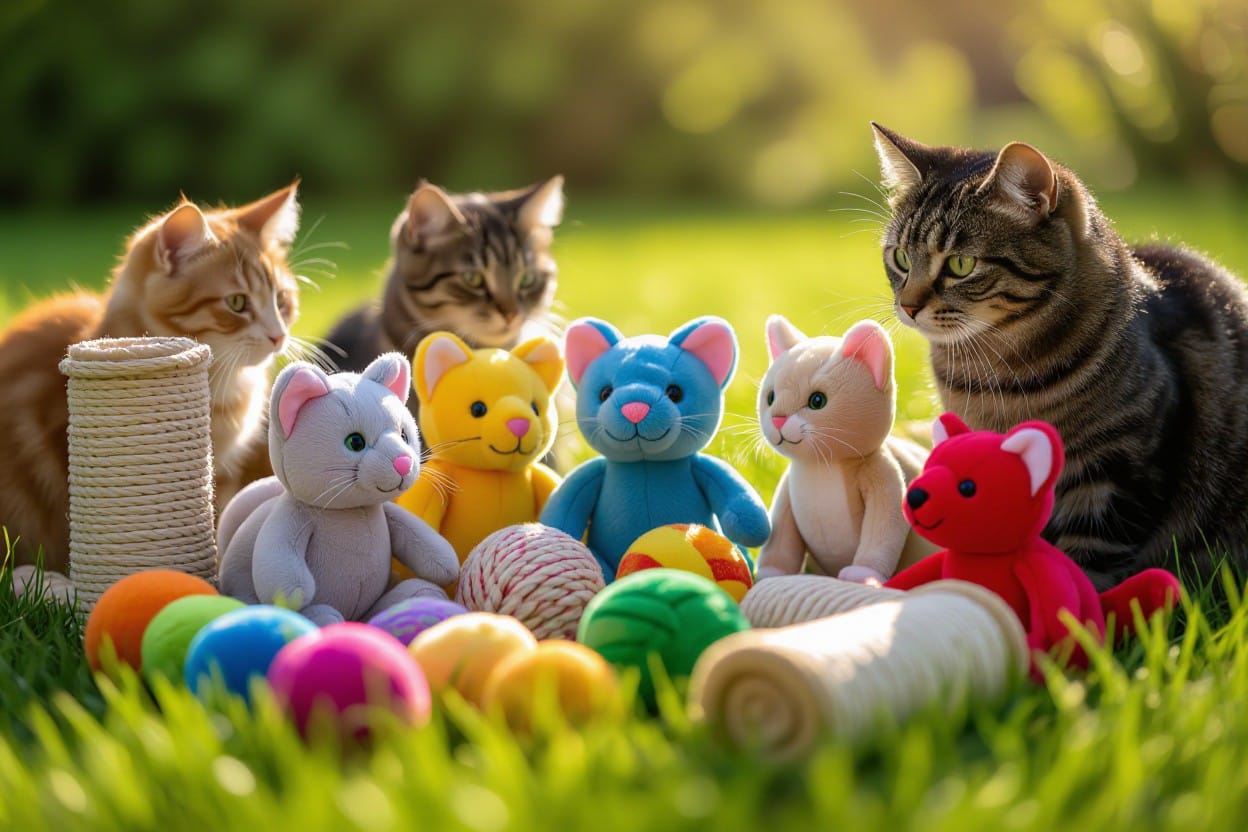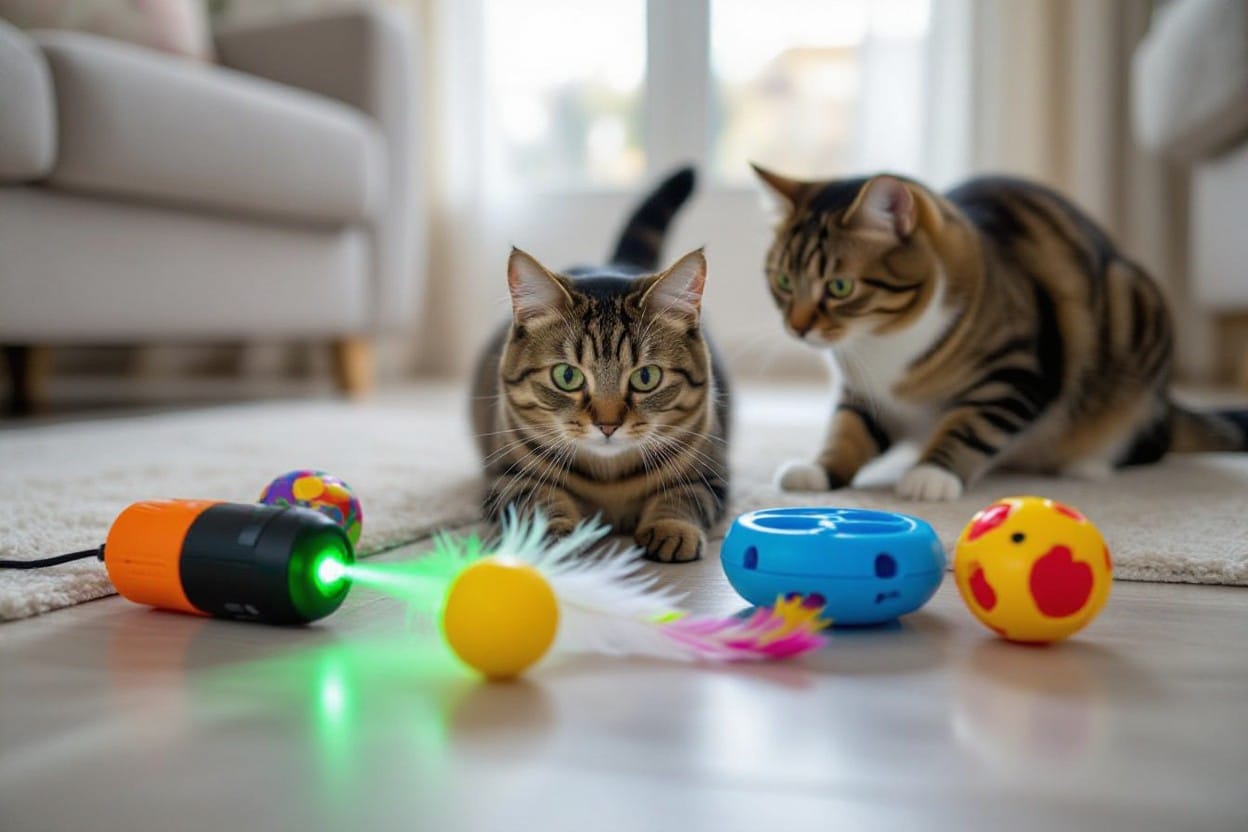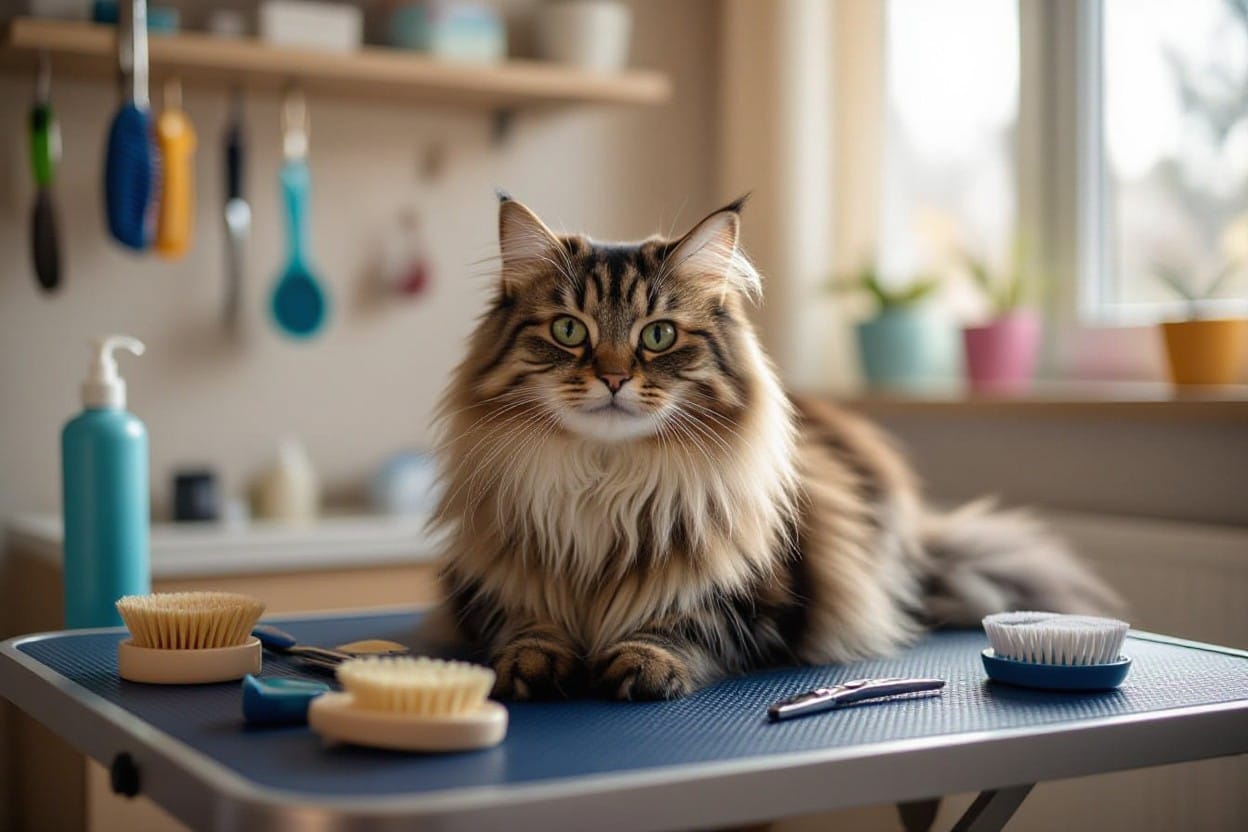With the right tools and techniques, you can transform cat grooming from a daunting task into an effortless routine. Maintaining your cat’s coat not only enhances their appearance but also contributes to their overall health, preventing issues like matting and skin infections. In this guide, you’ll discover important grooming tools that make the process quick and effective, along with tips to keep your feline friend calm during grooming sessions. Embrace these strategies to ensure that both you and your cat enjoy a smoother grooming experience at home.
Key Takeaways:
- Establish a grooming routine to maintain your cat’s coat and reduce shedding, which can lead to a healthier and happier pet.
- Invest in quality grooming tools, such as brushes and combs designed specifically for your cat’s fur type, to make the process easier and more efficient.
- Utilize positive reinforcement techniques, such as treats and praise, to create a stress-free grooming experience, encouraging your cat to enjoy the process.
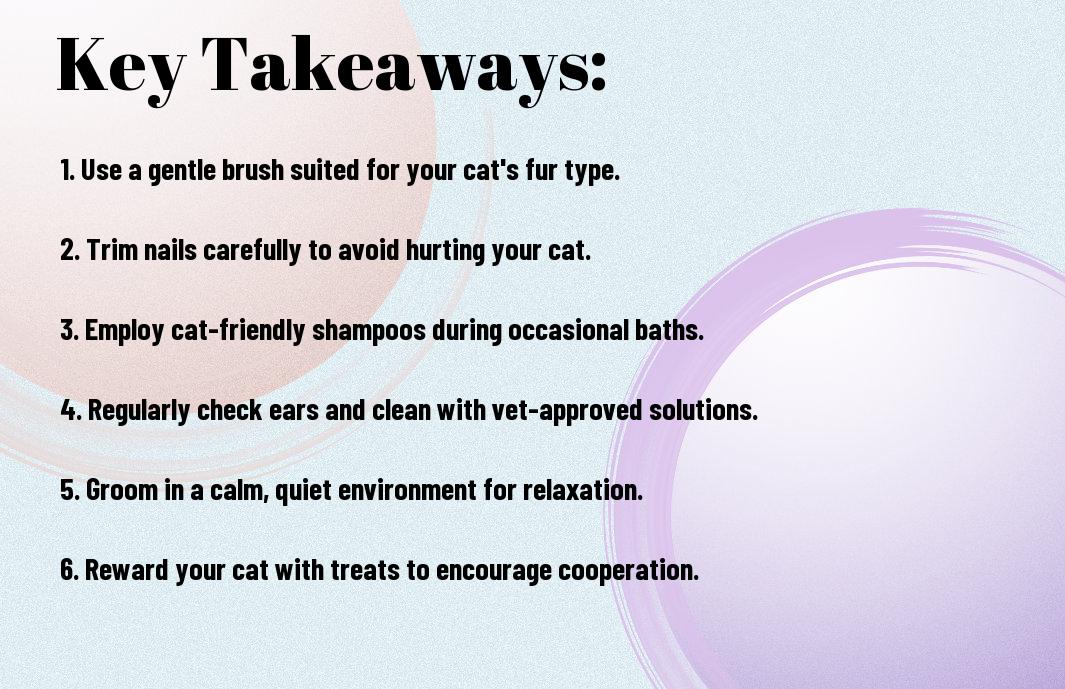
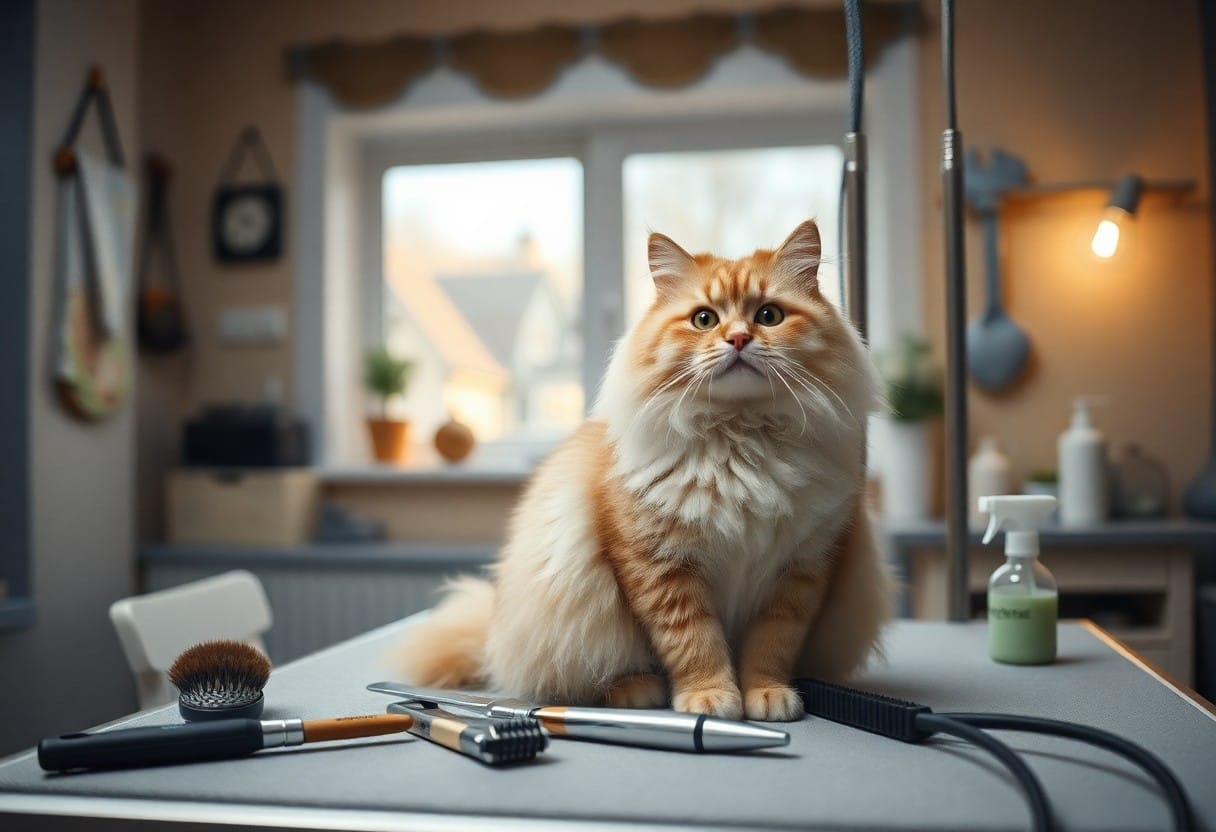
Essential Grooming Tools
Before plunging into the grooming process, it’s important to gather your grooming tools to ensure a smooth experience for both you and your cat. Having the right tools at hand will not only make the grooming process more efficient but will also keep your feline friend comfortable and healthy.
Brushes and Combs
Tools like brushes and combs are necessary for maintaining your cat’s coat. Depending on your cat’s fur type, you may require various styles, including slicker brushes for mats or wide-toothed combs for detangling. Using the appropriate tool reduces shedding and promotes a healthy, shiny coat, making grooming a more enjoyable experience for your cat.
Nail Clippers and Grinders
Tools for nail trimming include clippers designed specifically for cats and nail grinders for a more gradual approach. Each has its unique benefits, so choose the one that makes you feel confident in keeping your cat’s nails correctly trimmed without causing any undue stress.
Considering the options available, using nail clippers allows you to quickly and efficiently trim your cat’s nails, while grinders can help smooth rough edges and prevent splitting. It’s necessary to be cautious, as trimming too close can hit the quick, causing pain and bleeding. Regular nail maintenance is important for your cat’s overall well-being and will keep them comfortable as they scratch and climb. Finding a method that works for both you and your cat will make this grooming task feel less daunting.
Bathing Techniques
The process of bathing your cat can be simplified with the right techniques. Ensure you approach this task with care and patience, as many cats are not fond of water. Start by having everything you need within reach, including towels, a non-slip mat, and cat-specific shampoo. Gently introduce your cat to water, using a handheld sprayer or cup, and keep the experience as calm as possible to help your pet feel secure.
Preparing for a Bath
Beside gathering your bathing supplies, it’s important to create a comfortable environment for your cat. Ensure the bathroom is quiet and free from distractions. Brush your cat beforehand to remove any tangles or loose fur, making the bathing process more effective. You may also wish to seal off the area to prevent any escape attempts during the bath.
Choosing the Right Shampoo
At the heart of a successful cat bathing experience is selecting the appropriate shampoo tailored to your cat’s specific needs. Whether your cat has sensitive skin, allergies, or a particular coat type, there are shampoos available that cater to these concerns. It’s important to choose a shampoo that is formulated specifically for cats, avoiding human shampoos that can disrupt their skin pH.
Due to the unique composition of a cat’s skin, using the wrong shampoo can lead to irritation or allergic reactions. Look for products with natural ingredients, as these are often gentler and free from harsh chemicals. If your cat has specific conditions, consult your veterinarian for recommendations. Investing time in finding the right shampoo can greatly enhance your pet’s bathing experience and promote a healthier coat.
Dealing with Shedding
Now, managing your cat’s shedding can significantly improve your home’s cleanliness and your pet’s comfort. Regular grooming is important, as it not only keeps your cat’s coat healthy but also helps reduce the amount of fur left around your space. Understanding the right tools and techniques can make this process effortless and enjoyable for both you and your feline friend.
Shedding Tools
With the right shedding tools, you can effectively manage your cat’s fur. Consider using a slicker brush, a de-shedding tool, or a grooming glove. These specialized tools help remove loose hair and prevent mats, making shedding easier to handle while ensuring your cat enjoys the process. Investing in high-quality grooming tools can save you frustration and help maintain a healthy coat.
Techniques to Minimize Shedding
Among the effective techniques to reduce shedding are regular grooming sessions and maintaining a proper diet. Regularly brushing your cat not only removes loose fur but also stimulates their skin’s natural oils. Additionally, a balanced diet rich in fatty acids can lead to a healthier coat, reducing dander and shedding. Keeping your home environment cool and low-stress will also minimize seasonal shedding.
Indeed, proper grooming and nutrition play a vital role in minimizing shedding in your cat. Regular brushing sessions can cut down on the amount of loose fur floating around your home, allowing you to maintain a cleaner space. An optimal diet with appropriate nutrients contributes to the health of your cat’s skin and coat, which can result in less shedding over time. Always ensure your grooming routine is a positive experience for your cat to avoid stress and promote cooperation.
Managing Mats and Tangles
Keep a close eye on your cat’s fur to prevent mats and tangles from becoming a significant issue. Regular grooming sessions will help you identify problem areas early on and allow you to maintain a smooth and healthy coat. Investing in high-quality grooming tools, like a slicker brush or comb, will also help you address knots before they worsen, keeping your feline friend looking pristine.
Prevention Methods
For optimal fur health, establish a consistent grooming routine for your cat. Regular brushing, ideally several times a week, will help prevent mats from forming — especially in high-risk areas like under the arms and behind the ears. Using detangling sprays and maintaining a clean environment can also help minimize matting and tangling. Be sure to pay close attention to your cat’s coat during seasonal shedding periods, as they may require more frequent grooming during these times.
Safe Removal Techniques
Behind every successful detangling session lies a set of effective techniques. Ultimately, your goal should be to use tools like detangling brushes or combs to gently work through any mats. Begin by holding the base of the mat to prevent tugging at the skin, and always brush slowly to prevent discomfort. If you encounter a particularly stubborn knot, consider using scissors to carefully snip it out, but be exceedingly cautious to avoid injuring your cat.
It is vital to maintain a calm atmosphere during the grooming process. Take your time, and if your cat becomes anxious, take breaks to allow them to relax. Using a detangling spray can make the task much easier, as it softens the hair and reduces friction. If using scissors, ensure you have blunt-tipped safety scissors to avoid any accidental cuts. Should a mat be too complex or close to the skin, consider consulting a professional groomer to ensure your cat’s safety. Each of these steps will create a positive grooming experience for both you and your furry companion.
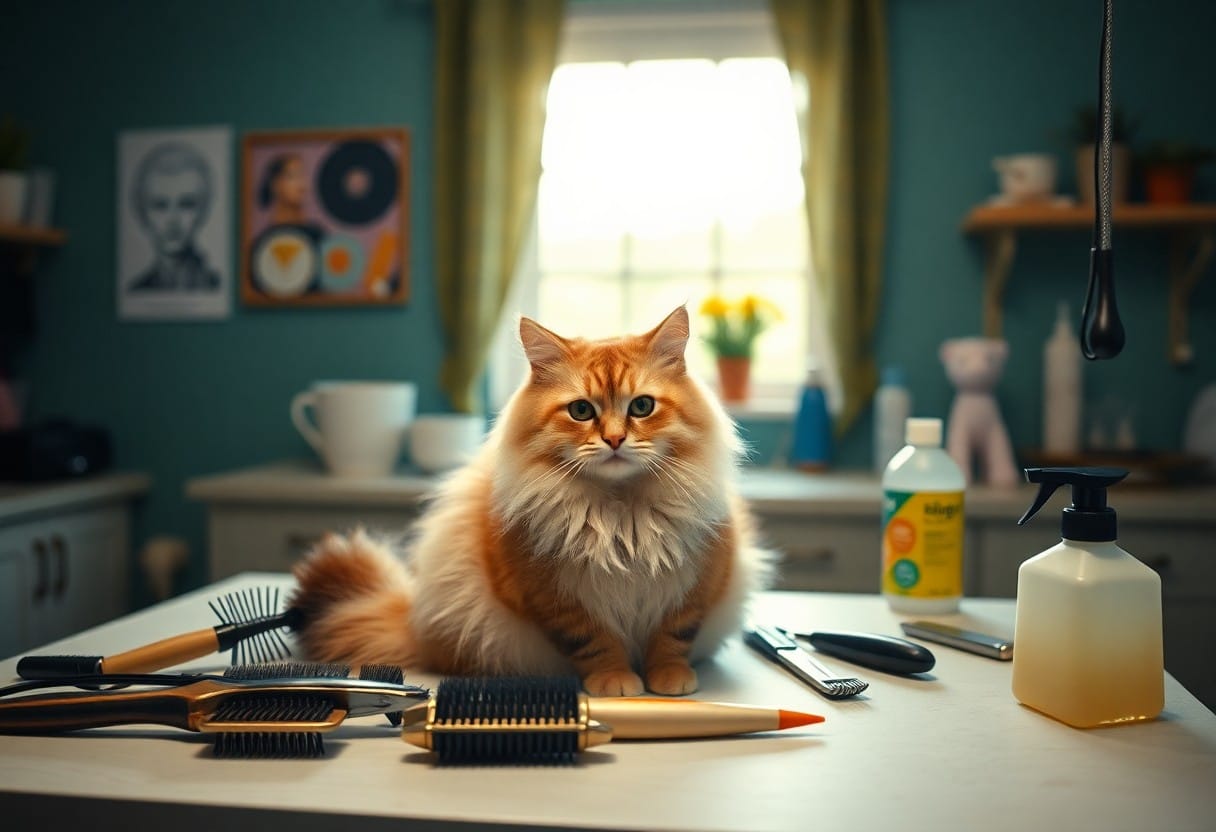
Ear and Eye Care
Despite the common belief that grooming is limited to brushing and bathing, ear and eye care are necessary components of your cat’s grooming routine. Neglecting these areas can lead to health issues such as infections or discomfort. Regularly checking and cleaning your cat’s ears and eyes ensures they remain healthy and comfortable, allowing your feline friend to enjoy a better quality of life.
Cleaning Ears Properly
An effective ear cleaning routine involves gentle inspection, followed by cleaning with appropriate solutions. Use a vet-approved ear cleaner and a soft cotton ball or pad to wipe away any debris or wax buildup. It’s important to avoid inserting anything deep into the ear canal, as this may cause injury to your cat.
Eye Care Solutions
To keep your cat’s eyes healthy, regular checks for signs of redness, discharge, or swelling are necessary. If you notice any abnormalities, consult your veterinarian, as they can indicate underlying health issues. Keeping the area clean helps prevent infections and discomfort.
For instance, the presence of discharge or persistent tearing can indicate a problem that requires attention. You can gently wipe your cat’s eyes using a soft cloth dampened with warm water or a veterinary-approved eye cleaner. If you observe any signs of infection, such as excessive redness or swelling, it’s vital to seek veterinary assistance immediately to ensure proper treatment and to protect your cat’s vision and comfort.
Grooming Tips for Different Breeds
To achieve the best grooming results for your cat, it’s vital to consider their specific needs. Different breeds have distinct grooming requirements that can enhance their coat health and overall appearance. Here are key tips:
- Research your cat’s breed for tailored grooming practices.
- Invest in suitable grooming tools based on coat type.
- Establish a regular grooming schedule to prevent matting.
- Pay attention to their skin health as part of grooming.
Thou will find that adopting these strategies not only promotes a healthy coat but also strengthens your bond with your feline friend.
Long-Haired Breeds
Different long-haired breeds, like Persians and Maine Coons, require consistent grooming to prevent tangles and mats. Aim for daily brushing using a wide-toothed comb or slicker brush to avoid knots and remove loose fur, which keeps their luxurious coats shiny.
Short-Haired Breeds
For short-haired breeds, like the American Shorthair and Siamese, grooming is generally easier, yet still vital. Regular brushing helps remove excess hair and distributes natural oils for a healthy shine.
Grooming your short-haired cat involves a simple routine that requires less effort than that of long-haired feline friends. A soft bristle brush or rubber grooming mitt can help catch loose fur, reducing shedding and promoting skin health. While these cats may not require daily grooming, a weekly session can keep their coat looking vibrant and healthy. Additionally, keep an eye out for any skin irritations or abnormalities, as these can easily go unnoticed with shorter fur. Overall, consistent care can bolster your cat’s vitality and affection.
To wrap up
So, with the right tools and techniques at your disposal, you can transform your cat grooming routine into a pleasant experience for both you and your feline friend. By utilizing quality brushes, clippers, and grooming wipes, along with a gentle approach and regular sessions, you will ensure your cat stays clean and comfortable at home. Embrace these strategies, and you’ll foster a positive environment that promotes your pet’s well-being and strengthens your bond.
FAQ
Q: What are the best tools for grooming my cat at home?
A: When grooming your cat at home, having the right tools can make the process easier and more efficient. Essential tools include a high-quality cat brush, such as a slicker brush or a bristle brush, depending on your cat’s coat type. A comb is also important for detangling fur and checking for mats. Additionally, nail clippers designed for pets will help you manage your cat’s nails safely. For cats with long hair, consider investing in a dematting tool or grooming glove for more thorough grooming sessions. Lastly, a grooming table with a non-slip surface can provide a stable area for grooming.
Q: How often should I groom my cat at home?
A: The frequency of grooming depends on your cat’s coat type and grooming needs. Long-haired cats typically require grooming at least three to five times a week to prevent mats and tangles. Short-haired cats generally need less frequent grooming, about once a week, to manage shedding and maintain a healthy coat. However, all cats benefit from regular grooming sessions, as it helps reduce shedding and promotes a bond between you and your pet. It’s also a good opportunity to check for any skin issues or parasites.
Q: What techniques can I use to make grooming my cat easier?
A: To make grooming your cat a smoother experience, start by creating a calm environment. Begin the grooming session when your cat is relaxed, such as after a meal or playtime. Use gentle strokes and speak softly to help reassure your cat. Introduce the grooming tools gradually, allowing your cat to sniff and investigate them before use. If your cat shows signs of stress, take breaks or try grooming in shorter sessions. Using treats or positive reinforcement can also help encourage cooperation. Finally, consider periodic grooming during playtime to make the experience enjoyable for both you and your cat.
